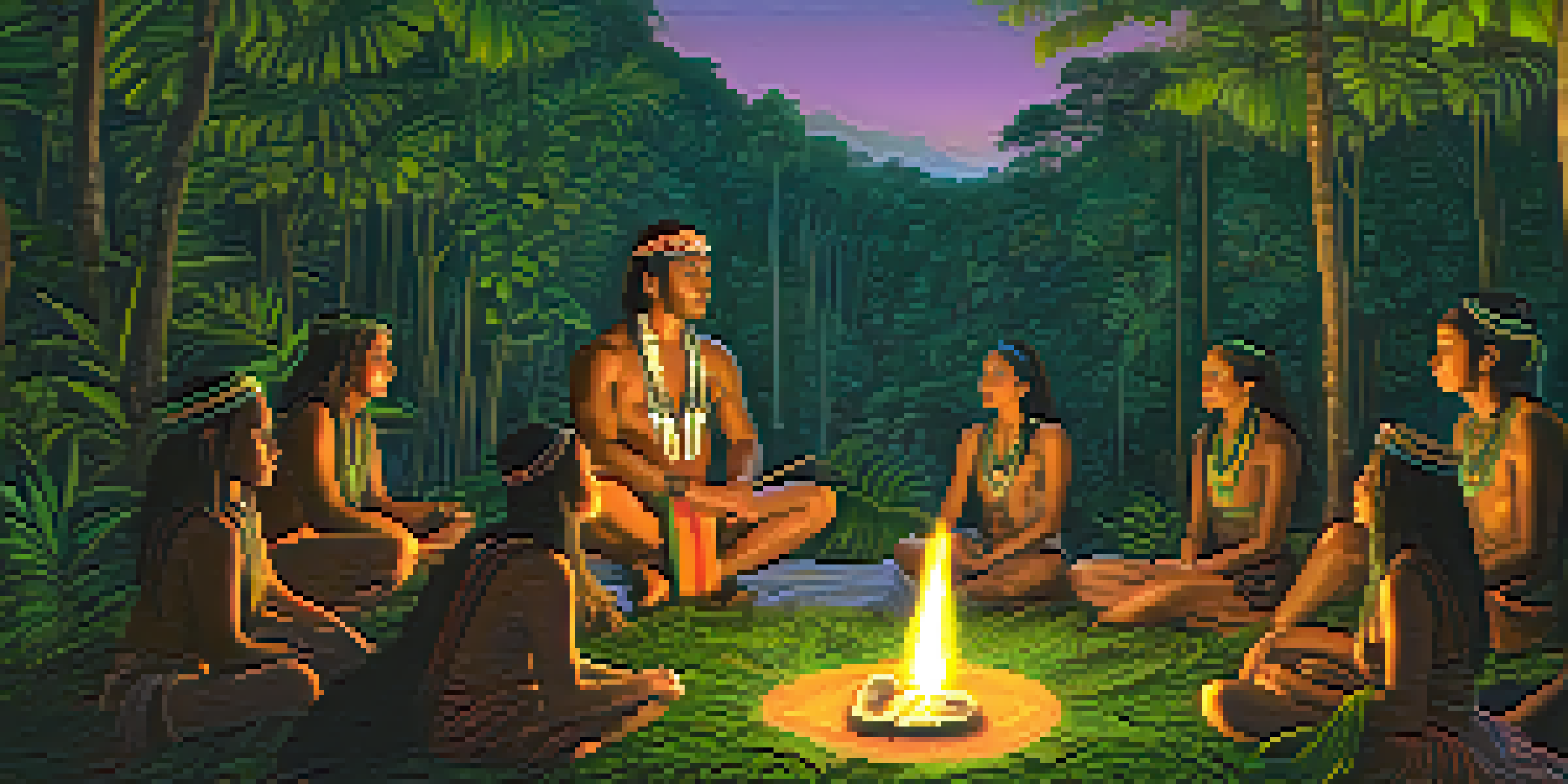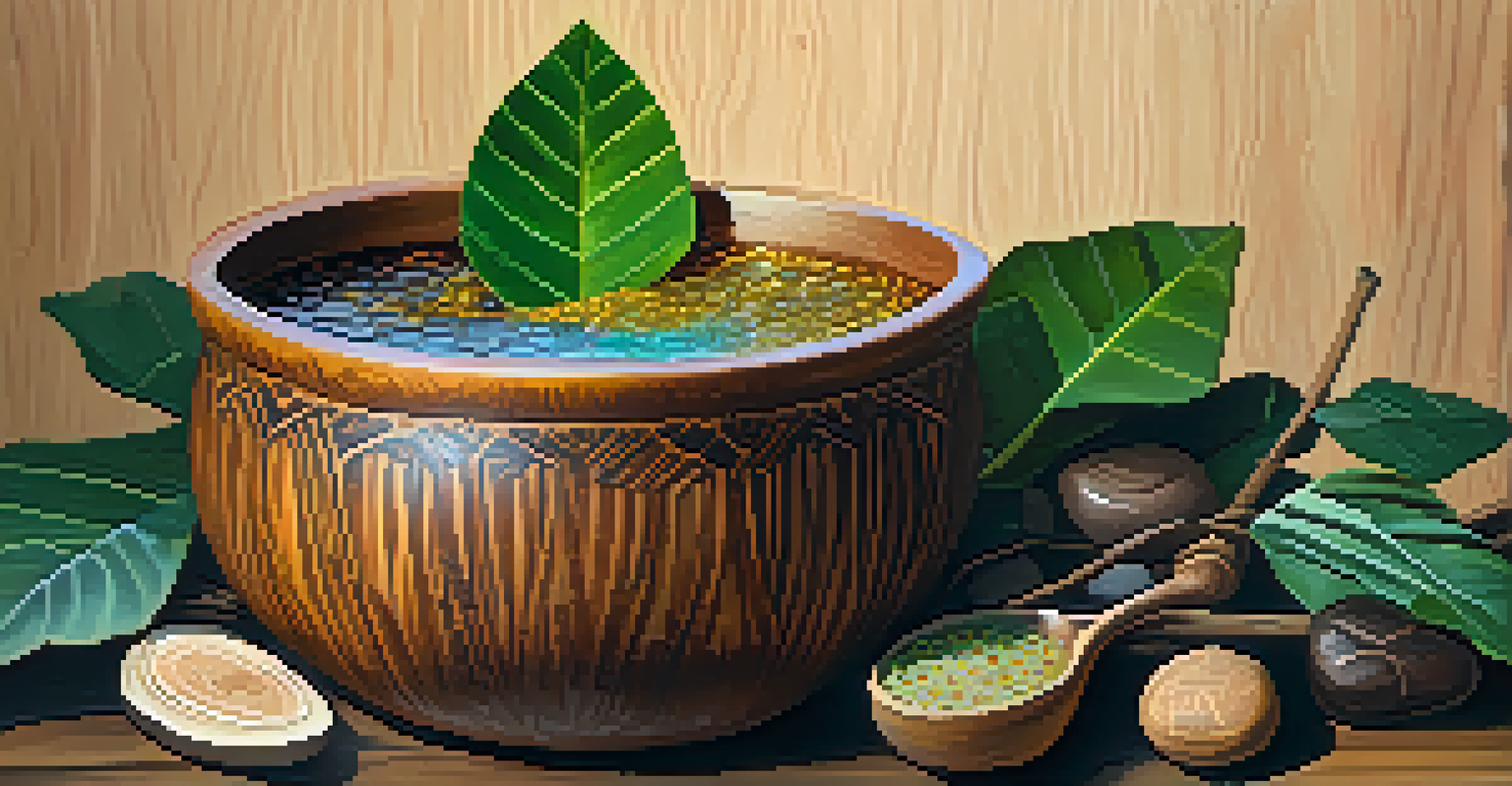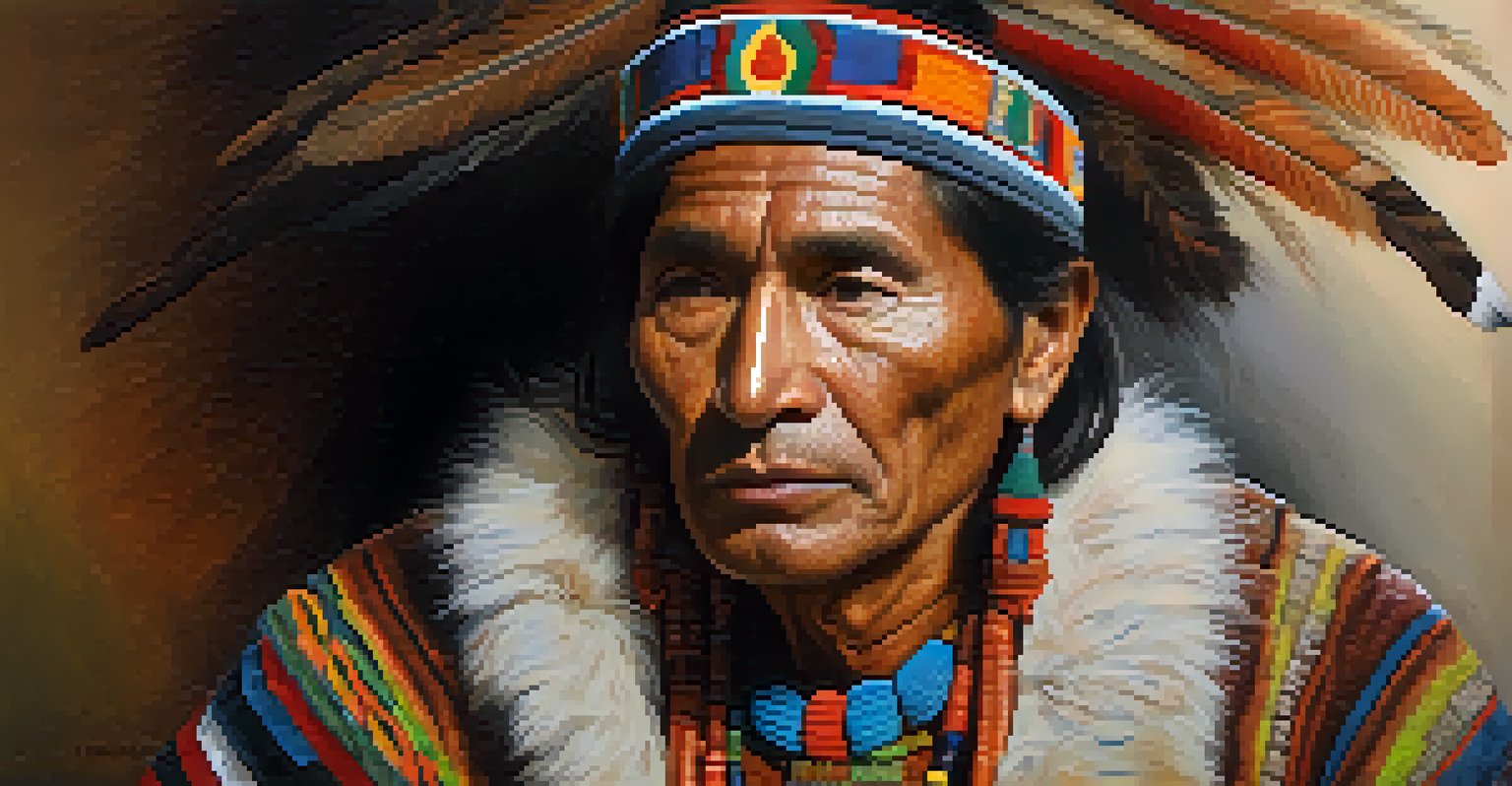Ayahuasca Ceremonies: A Path or a Detour to Healing?

What is Ayahuasca? Understanding the Plant Medicine
Ayahuasca is a powerful brew made from plants native to the Amazon rainforest, traditionally used in spiritual ceremonies. It's known for its psychoactive properties, primarily due to the compound DMT, which can lead to profound experiences and insights. Many people seek out Ayahuasca for its potential to facilitate emotional healing and self-discovery, often guided by experienced shamans. But what does this journey really entail, and how does it impact one's mental health?
The wound is the place where the Light enters you.
The brew is typically consumed in a ceremonial setting, where participants gather to engage in a collective experience. This setting often includes chanting, music, and rituals that enhance the emotional atmosphere. Many report that the experience allows them to confront deep-seated traumas and gain clarity on their life’s purpose. Understanding this context is essential as it sets the stage for the healing process.
However, it's crucial to approach Ayahuasca with caution. While it offers potential benefits, it also carries risks, such as psychological distress or physical reactions. Therefore, anyone considering this path should do thorough research and choose a reputable retreat, ensuring that safety and support are prioritized.
Healing Through Ayahuasca: Personal Transformations
Many individuals share stories of transformation after participating in Ayahuasca ceremonies. For some, the experience uncovers layers of emotional pain that had been buried for years, allowing for a cathartic release. This emotional healing can manifest as tears, laughter, or even deep insights that change one’s perspective on life. These powerful transformations often encourage people to reassess their relationships and life choices.

One relatable metaphor is that of peeling an onion; as you remove each layer, you encounter tears but also reveal a more profound essence. Similarly, Ayahuasca ceremonies can guide participants through their emotional layers, leading them toward a more authentic self. This process can foster a sense of connection not only with oneself but also with others, creating a community of shared experiences.
Ayahuasca: A Healing Journey
Ayahuasca is a powerful plant medicine known for facilitating emotional healing and self-discovery in a ceremonial context.
However, it’s essential to note that not everyone leaves a ceremony feeling healed. Some may even experience discomfort or confusion afterward, which raises questions about the effectiveness of such ceremonies. Understanding that healing is a personal journey can help set realistic expectations for those exploring this path.
The Role of the Shaman: Guiding the Experience
In Ayahuasca ceremonies, the shaman plays a pivotal role in guiding participants through their journeys. They are often seen as spiritual leaders, providing support, safety, and wisdom throughout the experience. The shaman's presence can create a nurturing environment that allows individuals to delve into their subconscious without fear. This relationship is crucial, as trust in the shaman can significantly impact the overall experience.
Healing takes time, and asking for help is a courageous step.
Many shamans utilize traditional songs, known as icaros, to help steer the energy of the ceremony. These songs can evoke various emotional responses and guide participants through their healing process. Imagine attending a concert where the music resonates deeply with your soul—this is similar to how the icaros can influence participants’ journeys, often leading to breakthroughs.
However, the shaman's expertise varies, so it’s essential to choose one who is well-respected and has a deep understanding of both the brew and the healing process. This choice can make a significant difference in the effectiveness and safety of the experience, emphasizing the importance of preparation before engaging in such ceremonies.
Potential Risks: Navigating the Dark Side of Ayahuasca
While many speak of the healing powers of Ayahuasca, it’s equally important to acknowledge the potential risks involved. Some participants may face overwhelming emotions or confront traumatic memories that can lead to distress. This uncomfortable confrontation can sometimes exacerbate existing mental health issues, making it crucial for individuals to assess their emotional readiness before participating.
Additionally, the physical effects of Ayahuasca can be intense, including nausea, vomiting, and other bodily reactions. These reactions are often referred to as 'purging' and can be seen as a form of release. However, the intensity of these experiences can be daunting, especially for first-timers. This underscores the necessity of having an experienced facilitator to guide participants through these challenging moments.
Integration is Key After Ceremony
Post-ceremony integration is crucial for translating insights into everyday life, helping participants embed their learnings into their routines.
Furthermore, Ayahuasca is not suitable for everyone. Those with certain medical conditions or who are taking specific medications should approach with caution. Understanding these risks can empower individuals to make informed decisions about their healing journey.
Integration After the Ceremony: A Crucial Step
One of the most overlooked aspects of Ayahuasca ceremonies is the integration process that follows. After the intense experience, participants often find themselves in need of support to make sense of their insights and emotions. This process can be likened to waking up from a vivid dream; while the experience was profound, translating it into everyday life can be challenging. Integration involves reflecting on the experience and determining how to implement newfound insights.
Many people seek integration support through therapy, community discussions, or journaling. This support can help bridge the gap between the ceremonial experience and daily life, allowing individuals to embed their learnings into their routines. It’s similar to planting a seed; without nurturing, it may not grow into a flourishing plant. Integration is essential for cultivating the growth that arises from the ceremony.
Moreover, maintaining connections with fellow participants can provide a supportive network for sharing experiences and insights. This community aspect can help individuals feel less isolated as they navigate their post-ceremony emotions. Emphasizing integration is vital for ensuring that the insights gained during the ceremony lead to lasting positive change.
Cultural Considerations: Respecting Indigenous Practices
When exploring Ayahuasca, it's essential to acknowledge and respect its indigenous roots. Originally, this practice was developed by indigenous tribes in the Amazon, who utilized the brew for spiritual and medicinal purposes. Engaging in Ayahuasca ceremonies without understanding their cultural significance can be seen as appropriation, which is why respect and acknowledgment are crucial. Those interested in this healing should approach it with humility and a willingness to learn.
Moreover, it's vital to support indigenous communities by choosing retreats that work directly with these traditions. This not only ensures an authentic experience but also helps preserve the cultural heritage associated with Ayahuasca. Imagine visiting a museum; you wouldn't touch the artifacts without understanding their history, right? Similarly, participating in these ceremonies requires a respectful approach to the culture it originates from.
Respect Indigenous Practices
Engaging with Ayahuasca requires respect for its indigenous roots and cultural significance to ensure an authentic and meaningful experience.
By honoring the traditions and practices surrounding Ayahuasca, participants can contribute to a more sustainable approach to its use. This respect fosters a deeper connection to the experience, enhancing both personal healing and the preservation of indigenous wisdom. It’s a reminder that healing is not just an individual journey but one that intersects with broader cultural narratives.
Is Ayahuasca the Answer? Personal Reflection on Healing
Ultimately, the question of whether Ayahuasca is a path or a detour to healing is subjective and varies from person to person. For some, it serves as a powerful catalyst for change, while for others, it may not resonate at all. This variance underscores the complexity of healing—there’s no one-size-fits-all solution. Reflecting on one’s motivations and emotional readiness is crucial when considering this journey.
Many participants emphasize the importance of being open-minded yet discerning. Approaching Ayahuasca with a sense of curiosity can lead to profound insights, but it’s equally important to remain grounded in reality. Think of it like trying a new recipe; while you may be excited about the outcome, it’s essential to follow instructions and know your ingredients well.

In conclusion, whether Ayahuasca is a path or a detour depends largely on individual experiences and intentions. By understanding the complexities involved and prioritizing safety, participants can make informed choices about their healing journeys. It’s a reminder that healing is not merely a destination but an ongoing process that requires patience and self-reflection.